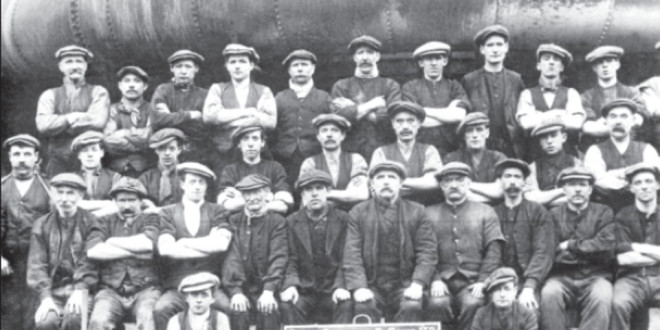BY JOHN MILLAR (JONAS STEPŠIS)
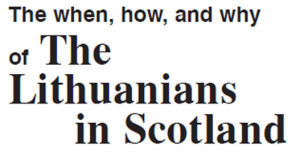
MY INTEREST IN THE LITHUANIAN COMMUNITY in Scotland stems, firstly, from the fact that I am the Scots-born son of Lithuanian immigrants who settled in Scotland at the beginning of the 20th century. Secondly, from a deep, compulsive desire to find my roots. When I discovered that my ancient, but ignoble, blood stretched back into the mists of Lithuanian peasantry, I was determined to find the how, why, when, and wherefor of the Lithuanians’ arrival and life in Scotland. I did not visualize how difficult, or how long this self-imposed task would take.
WHEN the Lithuanians first arrived in Scotland is conjectural and, indeed, controversial. Documentary evidence is conspicuous by its absence and available sources are vague. Around the middle of the 19th century, the use of passports was almost obsolete and became compulsory to enter the United Kingdom with the start of World War I in 1914: photographs became obligatory from the 1st of February, 1915. Detailed immigration records are unavailable prior to 1914. Although the legal requirement for an alien to register with the Police Authority extends back to Biblical times, its implementation may not have been enforced until the passing of the Aliens Act of 1905, an Act which has been updated and amended at regular intervals. Alien records held by the police are destroyed, as a rule, 100 years from the individual’s birthdate. Official ship passenger lists exist only from 1890.
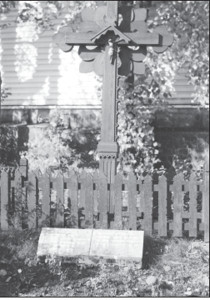
Most sources commenting on the arrival of Lithuanian immigrants claim that the first Lithuanians were brought to Scotland as Russian prisoners-of-war during the Crimean War and put to work in agriculture.
These sources, perhaps, rely on the comments made in the Lanarkshire volume of the Third Statistical Account of Scotland about the Lithuanians living in the Bellshill-Mossend district which claims that the original settlers were Russian prisoners.
The veracity of this statement is disproved in a book by Prince Demidoff, published in 1870, entitled Les Prisonnieres de Guerre in which he describes where Russian prisoners were incarcerated and their living conditions. “These prisoners, totalling over 1,000, and including women and children, were held in England in prison ships and other locations. By the 22nd of April, 1856, all Russian prisoners had been released and repatriated.” Nowhere in the book is there any reference to prisoners being sent to work in Scotland. Similarly, the Decennial National Census of 1861 – the nearest to the end of the Crimean War in 1856 – does not contain any Lithuanians. Evidence of their presence does not appear in Census returns until 1881, which shows some in the parish of Bothwell, Lanarkshire and two or three in Ayrshire. Although it is possible that Lithuanians were in Scotland before 1870, the trickle that became a flood apparently began in the 1880s. The 19th century contained two distinct waves of immigration into Scotland. An influx of Irish from the end of the 18th century, peaking in the 1840s, and a smaller Eastern European movement, mainly, but not exclusively, Jews from 1880 to 1914. The Lithuanians were part of this second movement. National Census returns show that Lithuanian immigration reached its peak during the last two decades of the 19th century and the first decade of the 20th century, ceasing with the outbreak of war in 1914.
HOW the Lithuanians made their way to Scotland from their homeland conjures up a number of tales that would put the Tales of the Arabian Nights in the shade. True stories, exaggerated and apocryphal tales in abundance. Almost everyone interviewed repeated the tale of the unscrupulous Scots skipper who crammed his boat full of Lithuanians who had paid for passage to the United States of America. After cruising about the North Sea for a few days, he then threw them off onto a lonely Lothian beach, crying “Get aff, yer in America!”
The majority, however, although undergoing many adventures, did not suffer this fate. Because the Czarist authorities would not allow Lithuanians to leave the country, departures were made clandestinely, normally by illegal crossing of borders and travelling to the German ports of Hamburg or Bremen. This was the route my father and uncle followed during the latter part of 1899, eventually reaching Hamburg and embarking on a boat which landed them at the Port of Leith in Scotland in 1900.
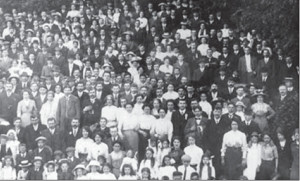
WHY the Lithuanians came to Scotland is a question more easily answered. Basically there were three main reasons for the emigration from their native land and one very good reason why they came to Scotland, which was not really their first choice as a permanent home. To the vast majority of European immigrants during the latter half of the 19th century, the United States of America was the “El Dorado” where the Statue of Liberty welcomed the “huddled masses yearning to be free” and the streets were paved with gold. Many of the people from the Baltic found the cost of a direct passage to the U.S.A. beyond their means (£5 one-way in 1900), whereas a similar ticket to Leith, Scotland was only £1. Scotland, therefore, became a stepping-stone where they could work and save enough money to take them subsequently on to America.
The first reason for leaving Lithuania was economic necessity. The country was a small, subjugated, suppressed nation under the dominance of Czarist Russia; an agricultural country where the large estates had been broken up into small tenant farms. Hardship on these farms increased as the size of the family increased. The law of primogeniture forced the younger siblings to seek employment elsewhere and the young males found the lure of rich, faraway places beckoning.
The other two causes of departure stemmed directly from the Russian occupation. The Russian authorities had imposed military conscription for all Lithuanian men on reaching the age of 21 with no time limit. A young man called into the Russian Army at 21 years of age could serve 10–15 years before being allowed home. Thus, to escape this unwanted military service, many left before reaching their majority. The young women, afraid of being left husbandless, followed them.
Lastly, as in most conquered countries, there were those who fled to escape racial, religious or political persecution. The abortive rebellion against the Russians in 1863–1865 resulted in the most severe repression, such that the period from 1864 to 1904 became known as “The Forty Years of Darkness.” Under these restrictive measures, freedom fighters, overt and covert, were bound to surface. These intrepid people flouted every edict of the Czarist authority, including the publishing and distribution of the banned own-language literature.
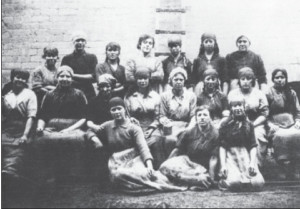
Sometimes a combination of reasons dictated the departure. The individual was nearing 21, was already involved with the underground resistance, and had come under suspicion by the gendarmerie and was warned to make himself scarce by his colleagues.
WHAT kind of welcome awaited the Lithuanians in Scotland? Leith harbor had no Statue of Liberty beckoning them ashore. Contemporary newspaper reports clearly show the animosity, ill-feeling and prejudice of the time. The Lithuanians were called “Poles” normally with some Anglo-Saxon adjectives. Even the National Census returns (1881, 1891) in the “Where Born” column, listed “Poland, Russia, or Russian Poland” against the names of Lithuanians. A local newspaper on the 8th of November, 1867 quoted Keir Hardie (miners’ organizer and future Member of Parliament) in a speech to a miners’ meeting: “These men (Lithuanians) I am informed, are growing fat on four shillings a week. Their chief item of diet is said to be garlic fried in lamp oil.” Hardie also alleged that the Poles had brought “Black Death” and “immorality” to Scotland and stated that “decent men are not going to be turned adrift to make room for beastly, filthy foreigners without knowing the reason why.”
By 1890, the increasing numbers of Lithuanians in Lanarkshire and Ayrshire and their activities were causing considerable criticism and concern, particularly to trade unions. In a short space of time, the immigrants had established themselves as a community within the native Scots community, continuing to use their own language and maintain their own cultural and social activities, holding concerts and dances with their own orchestras and celebrating weddings and christenings as decreed by Lithuanian custom.
The Scots did not try to find any common ground, continued to call them “Poles” and talk derogatorily about “they foreigners” with the funny names. Without even a byyour-leave, the Lithuanian names were Anglicized turning Stepšis, Rusgis, Vasauskas, Navickas, Domeika, etc. into Millar, Smith, West, Wallace, Brown, etc. From today’s viewpoint, some of the name changes appear humorous. In one Lothian parish, “ski” was added to the end of the English name, making Millarski, Smithski, Mitchelski, Greenski. Presumably this was done to prevent the “foreigner” being mistaken for a native! Despite all this, the Lithuanian communities grew and flourished – at least until 1914.
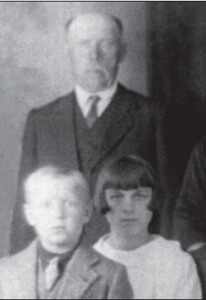
The County of Lanarkshire was always the area of greatest settlement – the town of Bellshill was referred to as “Little Poland” – and consequently the colony there improved its welfare needs faster and better than elsewhere. In the space of 20 years, they had their own provisions, tailors, shoemakers, shops, cooperative store, insurance company, welfare and benefits club, shipping agent and own-language newspaper. In 1899, the first ever Lithuanian language newspaper in Britain, called Vaidilutė (Vestal), was published in Glasgow. It only produced five issues and was succeeded by Laikas (Time) in 1905, defunct in 1906. Its printing press was sold to the Lithuanian Socialists who produced in 1907 Rankpelnis (The Labourer), edited for a short time in 1915 by Vincas MickevičiusKapsukas, one of the founders and later leader of the Lithuanian Communist Party. This newspaper lasted until 1923, though very few copies appear to have survived. By far the longest lasting Lithuanian publication was Išeivių Draugas (The Immigrants’ Friend) published and edited by Father Norbutas in 1913 in opposition to the Socialist press. Printed in Bellshill till 1976, when it moved to Nottingham, England, with the final edition published in December 1982.
Within the framework of the Scottish social structure, the Lithuanians had established their own communal life, self-contained and practically selfsufficient. Almost all they needed from the Scots was a place to work. From the beginning, the majority of Lithuanians were employed in the coal and iron industries. Peasant farmers, chiefly from the Suvalkija region of Lithuania, with little or no idea of mines or blast furnaces, adapted themselves swiftly to this arduous labor in the face of opposition, prejudice, resistance and language difficulties until they were grudgingly admitted to be “intelligent workmen who had acquired the craft and skill of the native worker.”
Why did an agricultural people become miners and steelworkers? One theory proposed by an interviewee was: “When the coalmasters recruited the first Lithuanians, they were told they were needed to ‘dig coal.’ To a peasant, digging meant using a spade to turn soil out of a hole. The recruiters did not enlighten them, and when the workers were stuffed into a cage and dropped into the bowels of the earth, it was too late to complain, so the Lithuanians just got on with it.”
They just got on with it! A slogan, indeed, to describe how the Lithuanians fared in this alien land of Scotland.
The start of the First World War in 1914 stopped further arrivals from the continent of Europe and the next four years saw the diminution of the Scots Lithuanian community. Many of the Scots-born young men enlisted in the British Army and in July, 1917, the “Poles” suddenly became “Russians” at the stroke of a pen. On the 17th July, 1917, an AngloRussian Military Convention was signed whereby all Russian subjects aged 18 to 41 were required to join the British Forces or be returned to Russia to serve in the Russian Army. The Lithuanians were now classed as “Russian subjects.” More than a thousand males within the age group chose to be sent to Russia. The dependents of those who elected to go, were left in dire straits. Neither the British nor Russian authorities would accept responsibility for their maintenance by the payment of any allowance. Various individuals and organizations championed their cause and finally, on the 5th December, 1917, the British Government announced payment of 12 shillings and 6 pence for a wife and 2 shillings and 6 pence for each child.
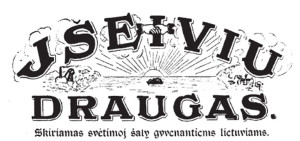
At the end of the war, there was no mass return of the men who went to Russia. Since December 1917, a ban on Russian refugees was enforced and this included Lithuanians. To be allowed back to Scotland, a Lithuanian had to prove he had fought alongside the “Interventionist” forces and not with the Communists. Of the 1,200 or so who had left Scotland for Russia, not more than a third were allowed back, and for many, some years elapsed before they returned to their families.
The dependents of those not permitted to return now became a burden on the State. In March 1920, a repatriation scheme was implemented. Supposedly on a voluntary basis, which became virtually compulsive when the Treasury withdrew payment of the allowances. Eventually about 600 women and children were shipped off to Russia to find their husbands and fathers. The British Government, because of their fear and suspicion that Bolshevism could spread to Great Britain, succeeded in fragmenting the Scottish Lithuanians.
The inter-war years brought considerable changes throughout the country. In 1870, the west of Scotland had 145 ironworking furnaces with supporting coal and iron ore mines. By 1936, only 15 blast furnaces were in operation. The old rows and squares were being demolished, and the Lithuanians were finding difficulty obtaining employment, so many decided to move out of Scotland. Political émigrés returned to the now free Republic of Lithuania to continue their political work. Others were glad to go back to the native land to live free from Russian subjugation, while some achieved the original dream of sailing to the United States of America.
New modern housing schemes were built to house the tenants of the old rows and squares which broke up close-knit communities, dispersing them without consideration throughout the towns. As one man remarked, “The only time we see each other now is at Mass.”
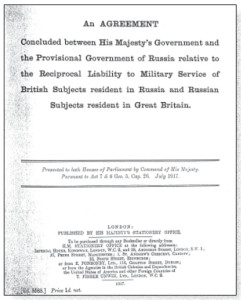
Second and third generation Scots-born Lithuanians had reached adulthood, in many cases had become assimilated Scots with Anglicized surnames, and in order to obtain a decent job did not want their Lithuanian ancestry known or talked about. People who, as children, were articulately bilingual, could suddenly only speak English. Many left the district where they were born, moving to an area where their parentage was unknown and they could live as Scots. “In spite of my name being changed, everybody new I was a “Pole,” so I moved away to a place where they did not know who or what I was.”
The Second World War meant that the Scots-born Lithuanians were conscripted into the British Forces, but their parents and grandparents who had never become nationalized, were still required to register as Aliens with the Police authorities. Men in their 70s and 80s, many of whom had spent 50 years in Scotland, were regarded as “foreigners” and perhaps a threat to the war effort.
The end of the war brought an injection of new blood to the rapidly aging and shrinking Lithuanian community in Scotland. Between 1947 and 1949, the U.K. Government brought 5,732 Lithuanian displaced persons to Britain under two work schemes. About 600 of this number came to work in Scotland, and this influx tended to rejuvenate the old colonies in the Lanarkshire area.
The story of the Lithuanian people is of a national identity, language, culture and faith which has withstood centuries of oppression and subjugation. They have a diaspora in most major countries in the world, unified by their determination to cling to their language, religion and customs. “Dievas ir Tėvynė” (God and Fatherland) has seen them through almost 200 years of Czarist, Nazi, and Soviet domination.
Today, in Scotland, whatever impact the Lithuanian community had on the Scottish industrial and social scene is gone. The Scottish Lithuanian Social and Recreation Club in Mossend, Lanarkshire still exists, but its membership is ageing and diminishing through natural means annually. The original immigrants are long gone with only an occasional graveside monument inscribed in a foreign tongue to remind the onlooker this was not a native Scot.
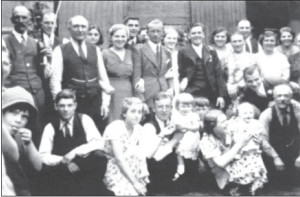
The first Scots-born Lithuanians, like myself, are octogenarian/nonagenarian and are also shrinking fast in numbers and requires diligent searching to find them. The succeeding generations are Scots, in name and outlook, and are only very dimly aware that Greatgranny or Grandpa came from somewhere on the Baltic. The young no longer speak the ancient language, do not want to know the old folks’ customs and culture; they only want to be the same as the Scots next door. The identity is lost!
I believe that once my generation dies out, the Lithuanian presence in Scotland will also die.
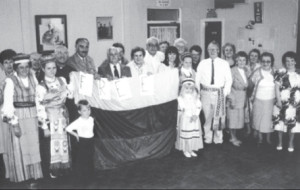
 DRAUGAS NEWS Lithuanian World Wide News in English
DRAUGAS NEWS Lithuanian World Wide News in English
